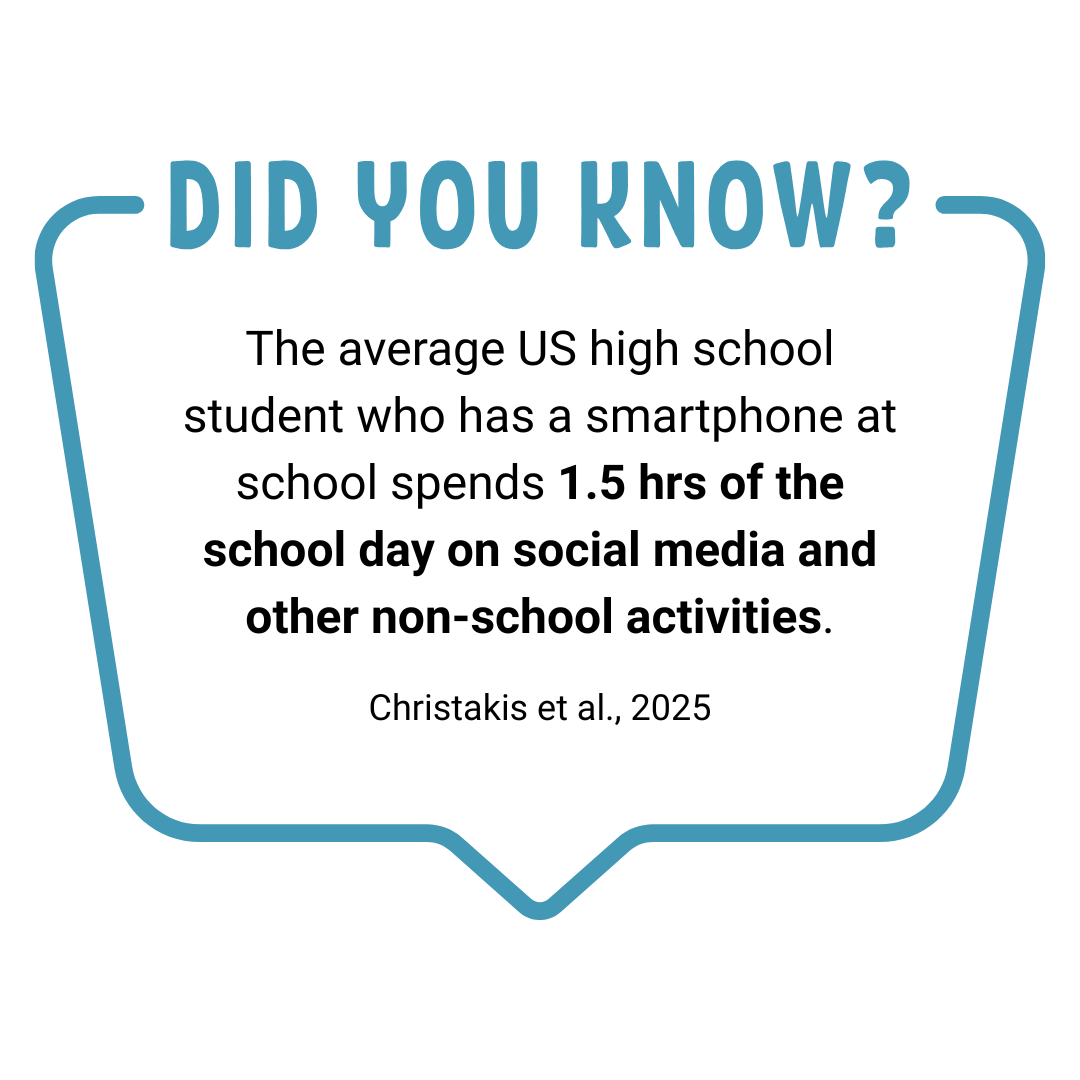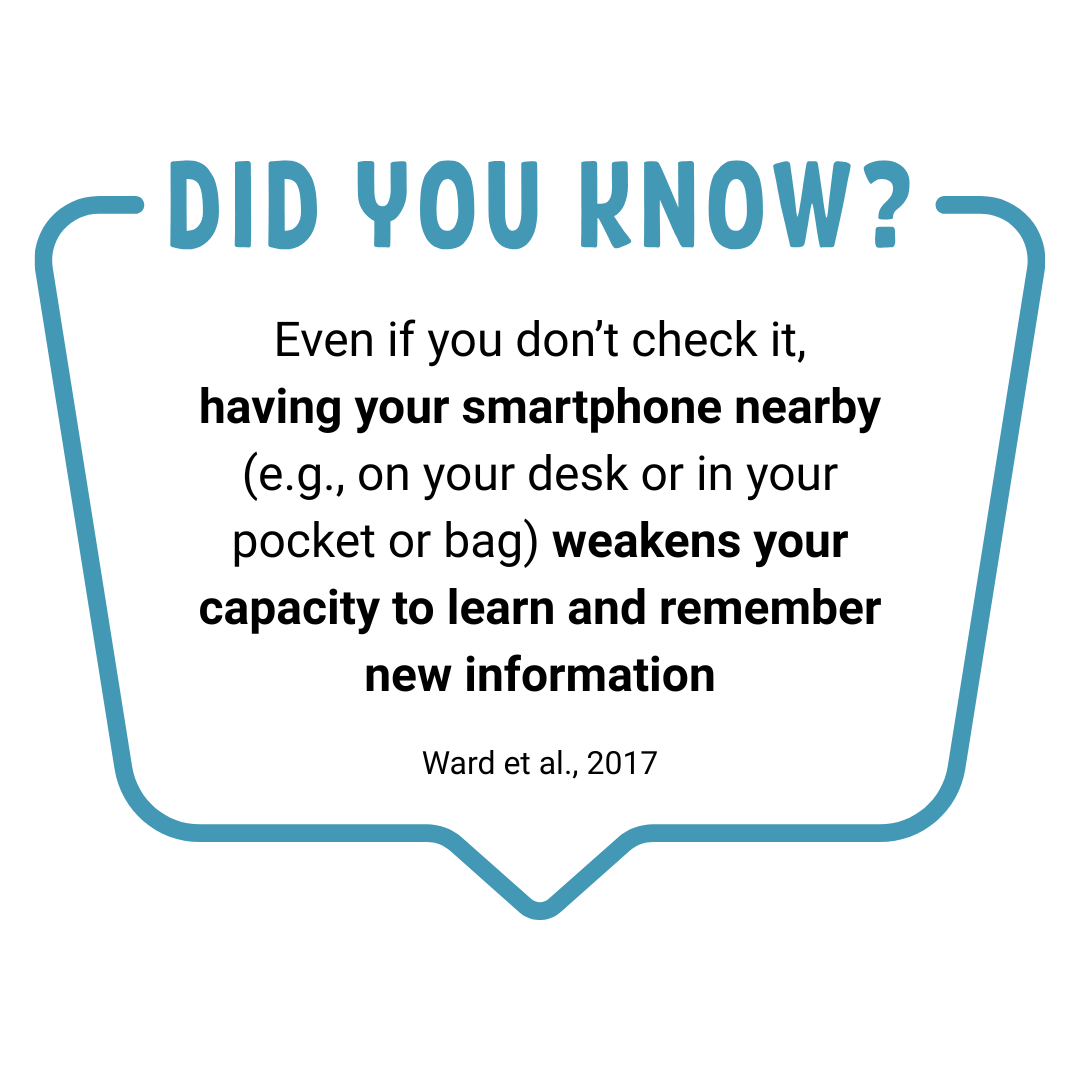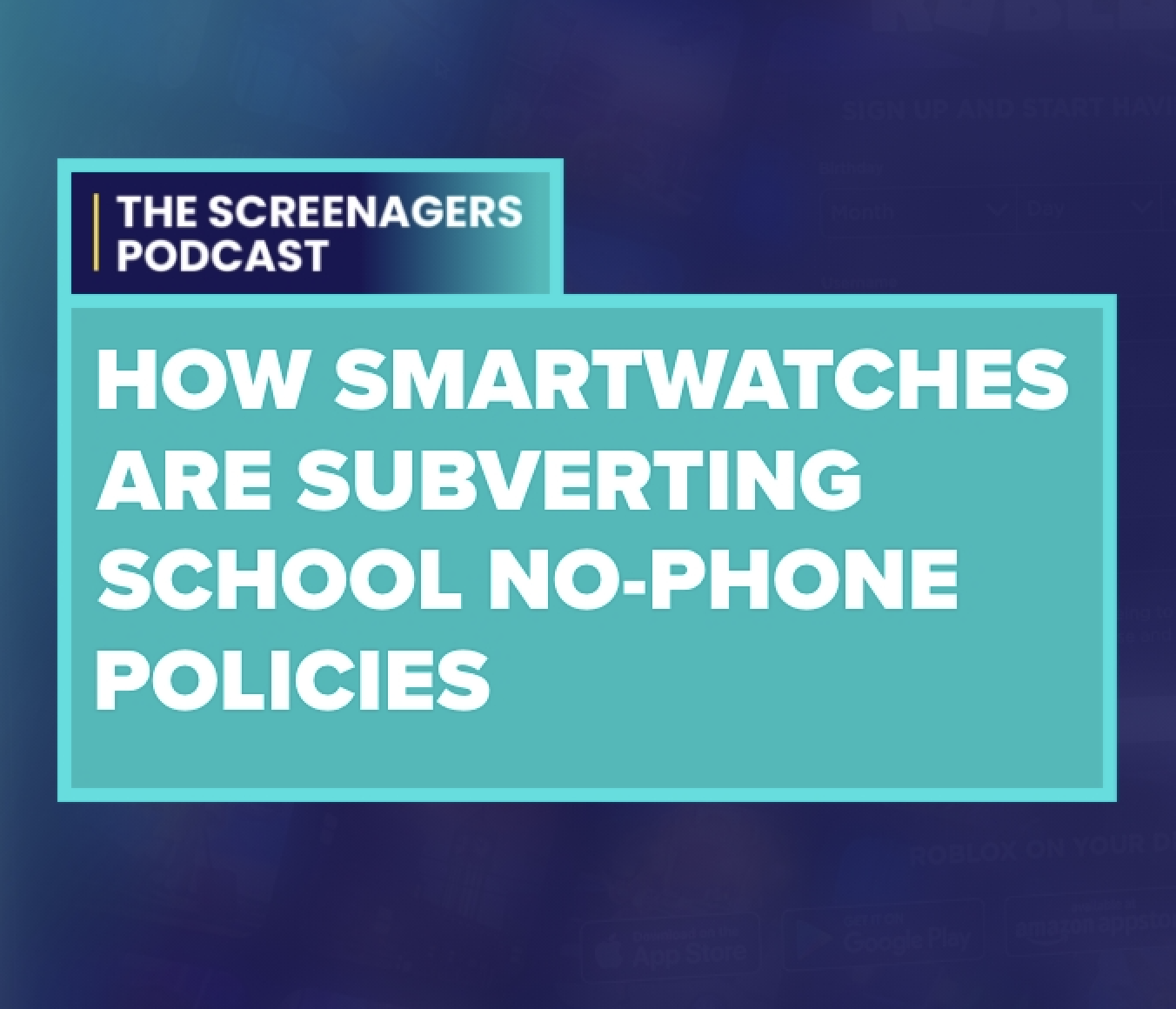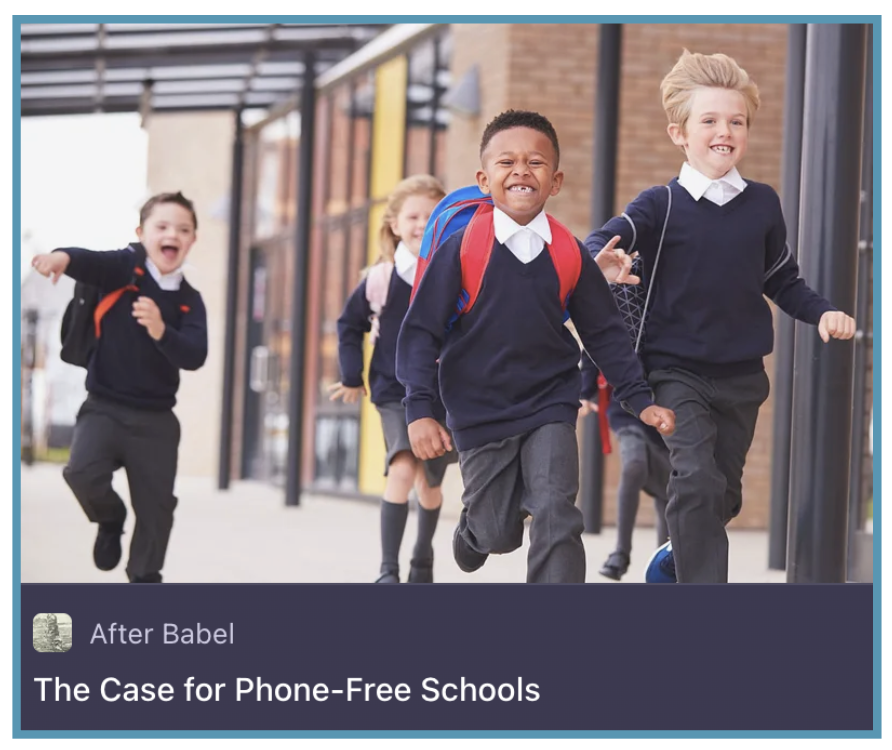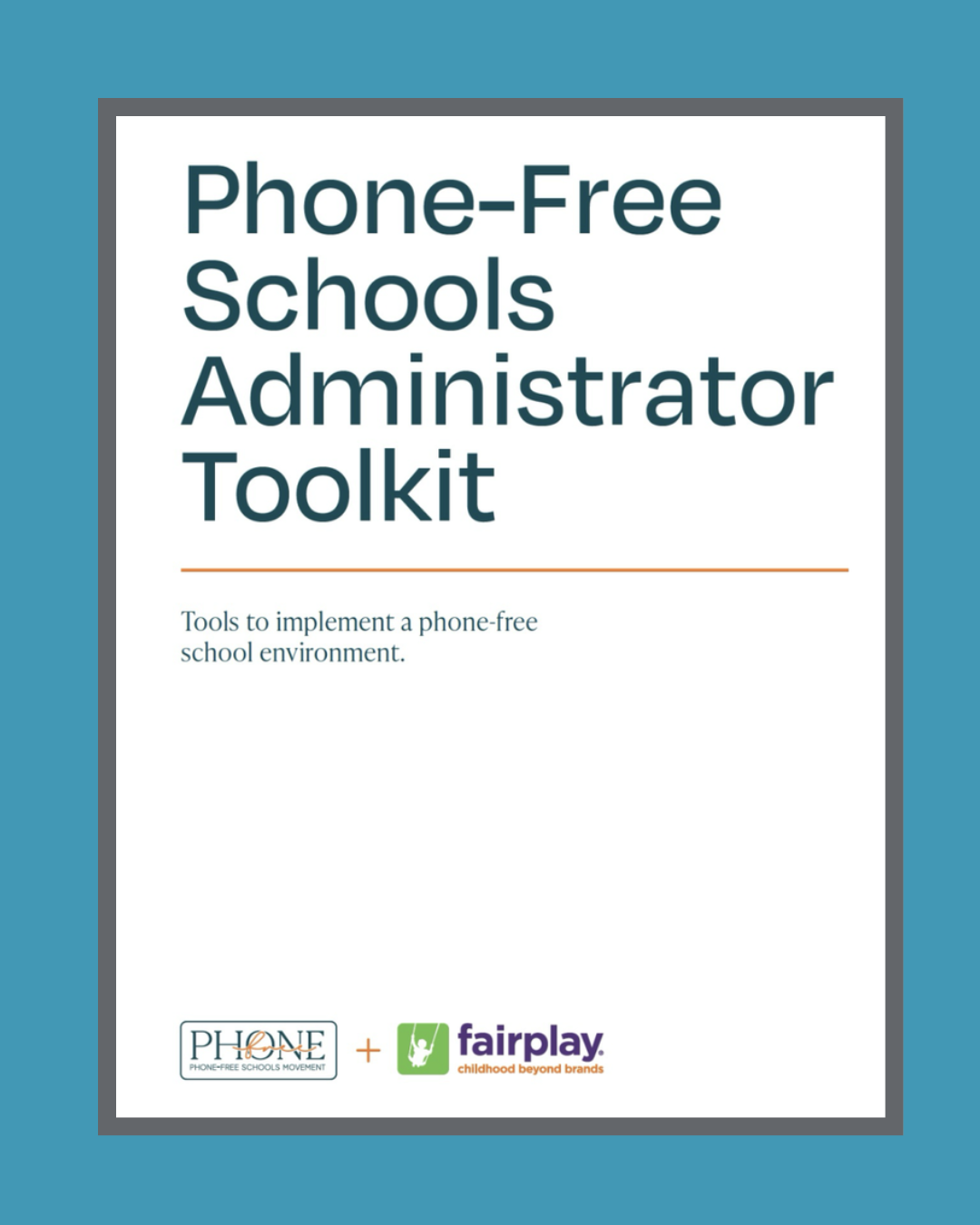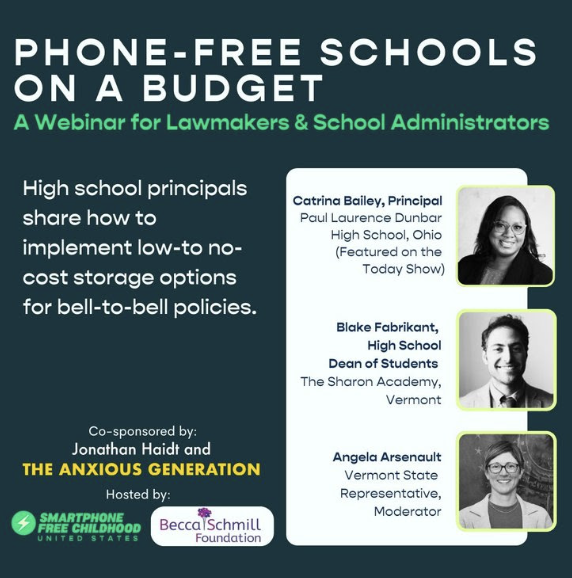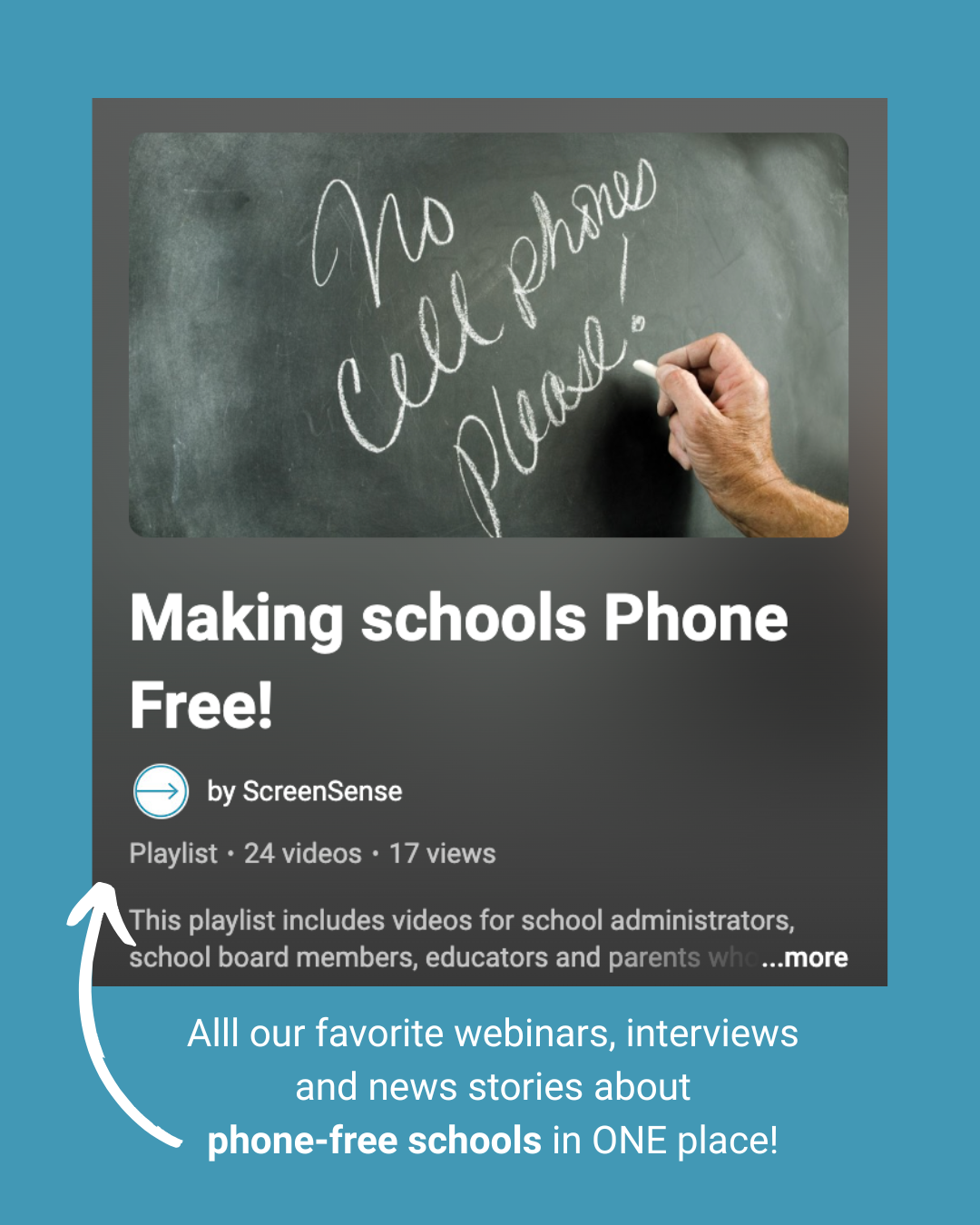
Phone-Free Schools
“No school ever regrets going phone-free. Benefits are large and come quickly.”
School administrators, districts, and legislators around the world are reimagining the modern school day by committing to or legislating a phone-free environment. The goal is to provide students several hours a day to think, learn, and interact without the incessant distraction of notifications, social media alerts, and texts. Clear boundaries with tech are needed to support healthy development, restore youth wellbeing, and reclaim the school environment for its intended purpose: teaching, learning, and social interaction.
Thanks to the work of Jonathan Haidt and his book, The Anxious Generation, momentum is growing around changing childhood tech norms. For parents, that means delaying and limiting access to devices, prioritizing essentials like face-to-face interaction and sleep, and teaching kids how to use technology wisely. For school administrators, it means re-evaluating the role of ed tech and establishing effective boundaries around personal device use. There are now more resources than ever for schools to establish sustainable policies to support a phone-free school day.
Phones are disrupting the school day. Period.
In this age of smartphones, watches, and wireless headphones, phone use at school and even during class is commonplace. Students are easily distracted from academics and in-person socialization by the nonstop temptation of notifications, games, and social media in their pockets (and on their wrists). Meanwhile, educators face the frustrating task of enforcing ad-hoc phone policies all day long. Both deserve better.
Sources: Pew Research, 2024; Christakis et al., 2025; Ward et al., 2017
Smartwatches are disrupting the school day too!
We are hearing from educators and school administrators how disruptive students’ mobile devices are to the learning environment - both phones and smartwatches. The discussion around disruptive mobile devices has previously centered on phones but more and more elementary schools are struggling with the impact of smartwatches on the school day - some as early as kindergarten.
In a recent podcast episode, Dr. Delaney Ruston (the MD behind the Screenagers documentaries) explores the rising problems of smartwatches in elementary schools and how one school is addressing the issue. Dr. Ruston’s guest blog post is an excellent complement to the podcast and justifies why school personal device policies must include guidelines for student smartwatches as well.
What does phone-free mean?
Over the past few years, schools have adopted piecemeal school policies in response to increased disruptions and behavioral issues from personal device use at school. There hasn’t been a clear definition of “phone-free” and this has caused a lot of confusion, inconsistent implementation and enforcement, mixed results, and constant battles over phones at many schools. The good news is there are emerging best practices.
The Phone-Free Schools Movement defines a phone-free school policy as a “first bell to last bell policy that requires all personal electronic devices (cell phones, smartwatches, earbuds, AirPods, fitness trackers and Bluetooth connected headphones, etc.) to be securely locked away and inaccessible for the entire school day.” We're hearing that with 100% building-wide enforcement by teachers and staff, a phone-free school day is sometimes possible without storage (i.e., phones must be stowed all day), but for most schools, this becomes an enforcement nightmare and adding a phone storage solution becomes their next step.
Ready to lean in? Start here!
Understanding the breadth of problems that personal devices create during the school day is the first step in implementing an effective new personal device policy. To jump start this process, we recommend circulating this article to your staff: The Case for Phone-Free Schools by Jonathan Haidt (2023).
This article is extremely helpful in understanding how the many distractions of phones impede learning and social connection at school. It also overviews the range of phone bans schools have tried so far and argues that many have been “unenforceable wishes.” It then explains how bell-to-bell policies paired with storage solutions show the most improvement in a short period of time.
The second step is to assess how personal devices like phones, smartwatches, and earbuds impact your specific school community. Invite fellow staff and teachers into the conversation. Discuss what is currently working and not working and solicit input on what could work better. Start to ask this question: At our school, how are personal devices impacting…?
Classroom focus and on-task learning, student readiness to learn, and time spent policing phones
Student behavior, discipline incidents, overuse of bathrooms, and class truancy
Student belonging and opportunities for social connection
Teacher job satisfaction
Student-to-teacher connectedness
Student wellbeing and mental health
Through a collective inquiry process, you can reach a decision to implement a more robust phone policy with staff and teacher buy-in. Going phone-free will take a building-wide effort and your entire administrative and teaching staff will need to be on board and ready to consistently enforce a phone-free policy for it to succeed.
The roadmap: let’s do this!
The Phone-Free Schools Movement has created a roadmap for school administrators to roll out an effective bell-to-bell personal device policy. In collaboration with Jonathan Haidt and other key advocates/experts, the Phone Free-Schools Movement is leading the way by providing resources and information for schools to implement a bell-to-bell policy.
Effective policy implementation is dependent on:
Compelling communication to teachers, parents, and students on why your school is going phone-free, with a focus on the benefits
Clear communication to all stakeholders of a simple policy and its enforcement mechanics
Teacher buy-in and consistent enforcement “building-wide” by all school staff
Parent support and student compliance
How to implement these components in a clear and well-organized roadmap can be found in their free Administrator Toolkit. It is a comprehensive guide for school administrators that includes:
An implementation how-to guide with a rollout timeline
A model phone policy and enforcement plan that you can copy or adapt
A research infographic plus list of the benefits of going phone-free - to help you make a compelling case for having a phone-free school campus
Three editable letter templates to announce your new phone-free policy to each stakeholder group: teachers, parents, and students
Responses to common pushback and FAQs that you can copy or adapt as part of your communication plan
We highly recommend creating a small working group with staff and PTO members (and students if at the high school level), to start working on how to address personal devices at your school, using this toolkit as your guide.
Phone-Free Schools Movement is available to answer questions, troubleshoot challenges and support you through implementation. You can reach them at info@phonefreeschoolsmovement.org
Looking for additional resources or approaches? There are more guides to help you navigate this process. You can find more support via our list of key resources!
Need storage ideas?
From Yondr’s lockable pouches to storage boxes, there are many options for personal device storage at school.
We have curated a list of phone storage products for schools to consider. Educators on a national webinar said they were having success with this lockable phone box that’s kept in each student’s first period, homeroom, or advisory during the entire school day.
Please note: We have not vetted these products for quality and effectiveness - please do your own due diligence to find the right storage product for your school.
Going phone-free doesn’t have to break the bank
Looking for more affordable options that hold a large amount of devices? Check out these DIY ideas!
Watch the 40-minute “Phone-Free Schools on a Budget” Webinar. High school principals share practical, inexpensive phone storage solutions with legislators and school administrators, because bell-to-bell policies don't have to break the bank! Hosted by Smartphone Free Childhood US and the Becca Schmill Foundation , and co-sponsored by Jonathan Haidt and The Anxious Generation.
Resources to share with your community
Parents, teachers, and students will all have a lot of questions about implementing a new personal device policy. There will be pushback and concerns. The toolkit from the Phone Free Schools Movement will help guide you through that process. To supplement the toolkit, we have curated a Phone Free Schools playlist on our YouTube channel with our favorite videos, podcasts, media coverage and short documentaries on the topic. The link is easy to share with your school community so anyone can learn more about the movement to make schools phone-free.
FOR EDUCATORS:
Learning from other schools can be a really helpful step in this process. The Directory of Phone Free Schools (a work in progress) is maintained by Smartphone Free Childhood US to help identify and connect phone-free schools and administrators. It also links to many of the schools’ new policies. When you are ready, make sure to add your school name to the list!
Other helpful resources include:
Listen to How One High School’s Bold Move to Lock Away Phones Transformed Learning, a 19-min podcast by Screenagers (2024).
Watch the 1-hour recording of a webinar for CA educators (Oct 22, 2024) about youth mental health, cell phone bans at school, and fostering healthy school environments - starring Jonathan Haidt (author of The Anxious Generation), Tony Thurmond (CA Supt of Public Instruction), Alberto Carvalho (Supt of LA Unified), and Nick Melvoin (Board member, LA Unified).
Read this 1 pager by MAMA summarizing why smartphones don’t belong in schools.
Read a blog by a NYC teacher who shares his account of removing phones from his high school in Harlem. It took the teachers drawing a clear boundary and “the student body eventually accepted their fate.” The results have been spectacular.
Watch Disconnected 2024: Cell Phones in Schools by NY State United Teachers (2024, 48-minute panel discussion by a group of educators and students).
Read the curated research-in-progress by Jonathan Haidt and Zach Rausch if you want to dig more into the existing research.
FOR PARENTS:
Schools can recalibrate and more clearly communicate stronger mobile device policies. But schools can't protect the school day from the influx of distractions from personal devices alone - they need help from parents!
Read Jonathan Haidt’s article, The Case for Phone Free Schools (2023).
Share the compelling research infographic plus list of benefits of going phone-free that’s available in the Administrator Toolkit above.
Address: What if?... Why?... But? Away for the Day and Smartphone Free Childhood have great responses to the most frequent parental pushbacks. And, five pages of the Administrator Toolkit above address common pushback and FAQs.
Listen to Lynn Lyon’s 55-minute podcast episode, We Need To Support School Bans On Phones (Even If Your Anxiety Won’t) (Aug 2024).
Read our blog post on how parents can do their part to keep phones and smartwatches from disrupting the school day.
Download the Phone-Free Schools Ambassador Toolkit, a free resource designed specifically for parents and advocates of phone free schools that complements the Administrator Toolkit.
FOR STUDENTS:
The transition to a phone-free school day for students, especially high school students, can be a challenging process on many levels. Engaging their voice and addressing their concerns also has to be part of the process. Rolling out an effective policy takes time, pre-education, buy-in, and will include a transition period. The following resources are teen-approved and can be used to start the conversation!*
Watch this video (14 min) from teens at Thetford Academy on their experience rolling out a new phone policy at their school.
Watch our favorite TED talks for teens from Dino Ambrosi (11 min) and Max Stossel (58 min) - both empower students to take more control of how they spend their time and attention. The Social Dilemma film (age 13+) also explains the business model of digital tech.
Challenge high school students to collectively change their digital habits by sharing resources like: Freedom app, Clearspace app, and this article about how social media is optional.
*We see a gap in content that makes a compelling case directly to high school students. Please email us if you’ve found one that increases student buy-in to the rationale behind a phone-free school day. Ideally this video would highlight the academic and social upsides of an uninterrupted school environment, acknowledging the systemic issue of tech creep instead of making students feel "punished” by a phone ban.
National & state legislation
Legislation around phone-free schools is happening in real time on the state and school district level across the United States. See a national snapshot on this map of state policies. At the center of many of these significant changes is a group of dedicated parents, educators, and policy makers. Distraction-Free Schools Policy Project (DFSPP) advocates for a better, safer educational experience for every child through legislation. DFSPP is the result of several organizations coming together to provide model bill language for phone and social media-free schools. Founding members now support teams from across the country in their state advocacy efforts to enact the model bill language. DFSPP, has a letter of support for phone and social media free schools, for individuals to sign. You can add your name to the 5000+ advocates!
DFSPP can be reached at phonefreeschools@bsfyouth.org for support on evaluating bills or introducing new legislation to create distraction-free schools.
Need more support?
Reach out to us at info@screensense.org for additional help navigating this work at your school or district.
Where to Next?
-

For Schools
Guide your school to a more intentional relationship with tech
-

Services
We offer Parent-Ed presentations as well as custom consulting for schools.
-

OneStep Blog
Monthly tips for teaching healthy tech use. Great resource to share with parents.



